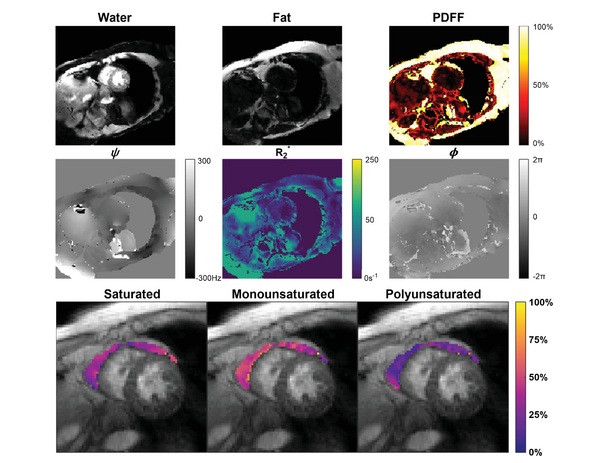Simple Scan Could Identify Patients at Risk for Serious Heart Problems
Posted on 24 Dec 2024
The human heart is naturally surrounded by a layer of fat called "epicardial adipose tissue." In healthy individuals, this fat plays a protective role and is essential for proper heart function. However, in some people, particularly those with obesity and risk factors for heart disease such as diabetes, high blood pressure, smoking, and poor diet, this fat can accumulate excessively, become inflamed, and undergo harmful changes in its composition. The health risks associated with excess fat around the waist and hips are well-documented. Now, researchers are using magnetic resonance imaging (MRI) to analyze the composition of the adipose tissue surrounding the heart. This technique could help doctors identify individuals at higher risk for serious cardiac conditions like coronary artery disease, atrial fibrillation, and heart failure, and predict how well these patients might respond to treatment. Early tests of this method have shown promising results, indicating that it could become a powerful tool for improving patient care.
Researchers at the University of Virginia Health System (Charlottesville, VA, USA) are employing MRI to measure both the quantity and composition of this fat. The imaging technology enables them to observe the body without needing surgery. By analyzing the levels of different types of fats—such as saturated fatty acids, monounsaturated fatty acids, and polyunsaturated fatty acids—found in the epicardial adipose tissue, doctors may be able to identify patients at risk of heart problems even before they exhibit symptoms. Detecting and addressing this issue could potentially slow the progression of heart disease, which remains the leading cause of death globally.

In developing this new tool, the UVA researchers faced significant challenges. One major hurdle was the movement of both the heart and the nearby lungs, which made it difficult to capture clear images of the adipose tissue. However, by developing innovative imaging techniques, the team has now been able to obtain the necessary images within the duration of a single breath hold. The technology has already been tested in the lab and on a small group of human patients. The results, published in Magnetic Resonance in Medicine, revealed that the fat around the heart in obese patients who had previously suffered heart attacks contained an unusually high amount of saturated fatty acids.
“Using this new MRI technique, we now for the very first time have the ability to know the composition of the fat that accumulates around the heart. This is important because depending on its makeup, the fat which surrounds the heart has the potential to release damaging substances directly into the heart muscle, leading to serious heart problems,” said researcher Amit R. Patel, MD, a cardiologist and imaging expert at UVA Health and the University of Virginia School of Medicine. “Being able to see the composition of the fat that surrounds the heart will improve our understanding of heart disease and may lead to the development of new treatment strategies in the future.”














